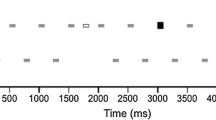Abstract
Evoked potentials reflect neural processing and are widely used to studying sensory perception. Here we applied a functional approach to studying single-trial auditory evoked potentials in the rat model of tinnitus, in which overdoses of salicylate are known to alter sound perception characteristically. Single-trial evoked potential integrals were generated with sound stimuli (tones and clicks) presented systematically over an intensity range and further assessed using the functional principal component analysis. Comparisons between the single-trial responses for each sound type and each treatment were done by inspecting the scores corresponding to the first two principal components. An analogous analysis was performed on the first derivative of the response functions. We conclude that the functional principal component analysis is capable of differentiating between the controls and salicylate treatments for each type of sound. It also well separates the response function for tones and clicks. The results of linear discriminant analysis show, that scores of the first two principal components are effective cluster predictors. However, the distinction is less pronounced in case the first derivative of the response.









Similar content being viewed by others
References
Alho K (1992) Selective attention in auditory processing as reflected by event-related brain potentials. Psychophysiology 29(3):247–263
Bidelman GM (2017) Amplified induced neural oscillatory activity predicts musicians benefits in categorical speech perception. Neuroscience 348:107–113
Cazals Y (2000) Auditory sensori-neural alterations induced by salicylate. Prog Neurobiol 62(6):583–631
Craven P, Wahba G (1978) Smoothing noisy data with spline functions. Numer Math 31(4):377–403
Cuevas A (2014) A partial overview of the theory of statistics with functional data. J Stat Plan Inference 147:1–23
de Boor C (2001) A practical guide to splines. Applied mathematical sciences, vol 27. Springer, New York
Ferraty F, Romain Y (2011) The Oxford handbook of functional data analaysis. Oxford University Press, Oxford
Ferraty F, Vieu P (2006) Nonparametric functional data analysis: theory and practice. Springer, Berlin
Goia A, Vieu P (2016) An introduction to recent advances in high/infinite dimensional statistics. J Multivar Anal 146:1–6
Horváth L, Kokoszka P (2012) Inference for functional data with applications, vol 200. Springer, Berlin
Kandel ER, Schwartz JH, Jessell TM (1991) Principles of neural science, 3rd edn. Elsevier, Amsterdam
Pokora O, Koláček J, Chiu T-W, Qiu W (2017) Functional data analysis of single-trial auditory evoked potentials recorded in the awake rat. Biosystems 161:67–75
Qiu W, Chang C, Liu W, Poon PW, Hu Y, Lam FK, Hamernik RP, Wei G, Chan FH (2006) Real-time data-reusing adaptive learning of a radial basis function network for tracking evoked potentials. IEEE Trans Biomed Eng 53(2):226–237
R Core Team (2013) R: a language and environment for statistical computing. R Foundation for Statistical Computing, Vienna. http://www.R-project.org/
Ramsay JO, Silverman BW (2005) Functional data analysis, 2nd edn. Springer, New York
Ramsay JO, Silverman BW (2007) Applied functional data analysis: methods and case studies. Springer, Berlin
Ramsay JO, Wickham H, Graves S, Hooker G (2017) FDA: functional data analysis. R package version 2.4.7. https://CRAN.R-project.org/package=fda
Roberts LE, Eggermont JJ, Caspary DM, Shore SE, Melcher JR, Kaltenbach JA (2010) Ringing ears: the neuroscience of tinnitus. J Neurosci 30(45):14972–14979
Wan I, Pokora O, Chiu T, Lansky P, Poon PW (2015) Altered intensity coding in the salicylate-overdose animal model of tinnitus. BioSystems 136:113–119
Wang J-L, Chiou J-M, Müller H-G (2016) Functional data analysis. Annu Rev Stat Appl 3:257–295
Acknowledgements
We thank Dr. Paul Poon for reading the manuscript and for helpful discussion. This work was supported by the Grant GA15-06991S of the Czech Science Foundation.
Author information
Authors and Affiliations
Corresponding author
Additional information
Grant GA15-06991S of the Czech Science Foundation.
Rights and permissions
About this article
Cite this article
Koláček, J., Pokora, O., Kuruczová, D. et al. Benefits of functional PCA in the analysis of single-trial auditory evoked potentials. Comput Stat 34, 617–629 (2019). https://doi.org/10.1007/s00180-018-0819-6
Received:
Accepted:
Published:
Issue Date:
DOI: https://doi.org/10.1007/s00180-018-0819-6



